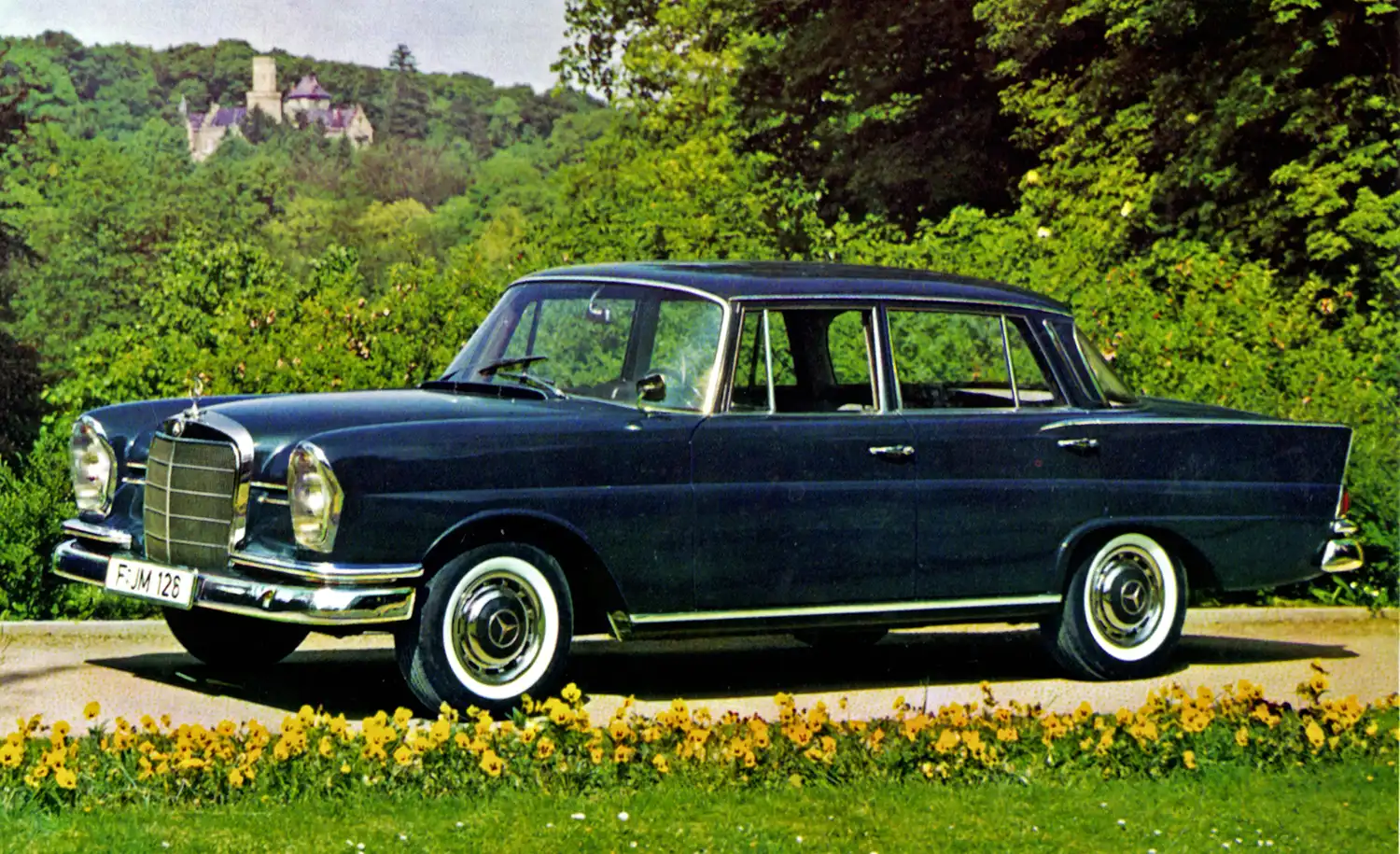
The Mercedes-Benz 220 SE, part of the W 111 series produced from 1959 to 1968, is an automotive icon renowned for its distinctive “tailfin” styling, its robust engineering, and its pioneering safety features. Introduced at a time when automotive design was evolving rapidly, the W 111 series, including the 220 SE, represented a significant step forward for Mercedes-Benz, blending luxurious comfort with advanced technology. The 220 SE, with its fuel-injected engine, offered a compelling combination of performance and refinement, solidifying its place as a symbol of sophisticated German engineering and enduring design. This article explores the history, design, engineering, and legacy of the celebrated Mercedes-Benz 220 SE “Tailfin.”
The Dawn of the “Tailfin” Era at Mercedes-Benz: The late 1950s and early 1960s saw a fascination with aerodynamic-inspired design in the automotive world, particularly in the United States with its prominent tailfins. Mercedes-Benz, while traditionally more conservative in its styling, embraced a more expressive design language with the introduction of the W 111 series in 1959. These models, including the 220 b, 220 Sb, and the focus of this article, the 220 SE, featured subtle yet distinctive tailfins, earning them the popular “Heckflosse” (German for “tailfin”) nickname. However, unlike the purely stylistic fins of some American cars, the Mercedes fins were designed with a practical purpose: to aid in rear-end stability and provide clear visual cues for parking. The W 111 series marked a departure for Mercedes-Benz, embracing a more modern and international design aesthetic while retaining the brand’s core values of quality and engineering excellence.
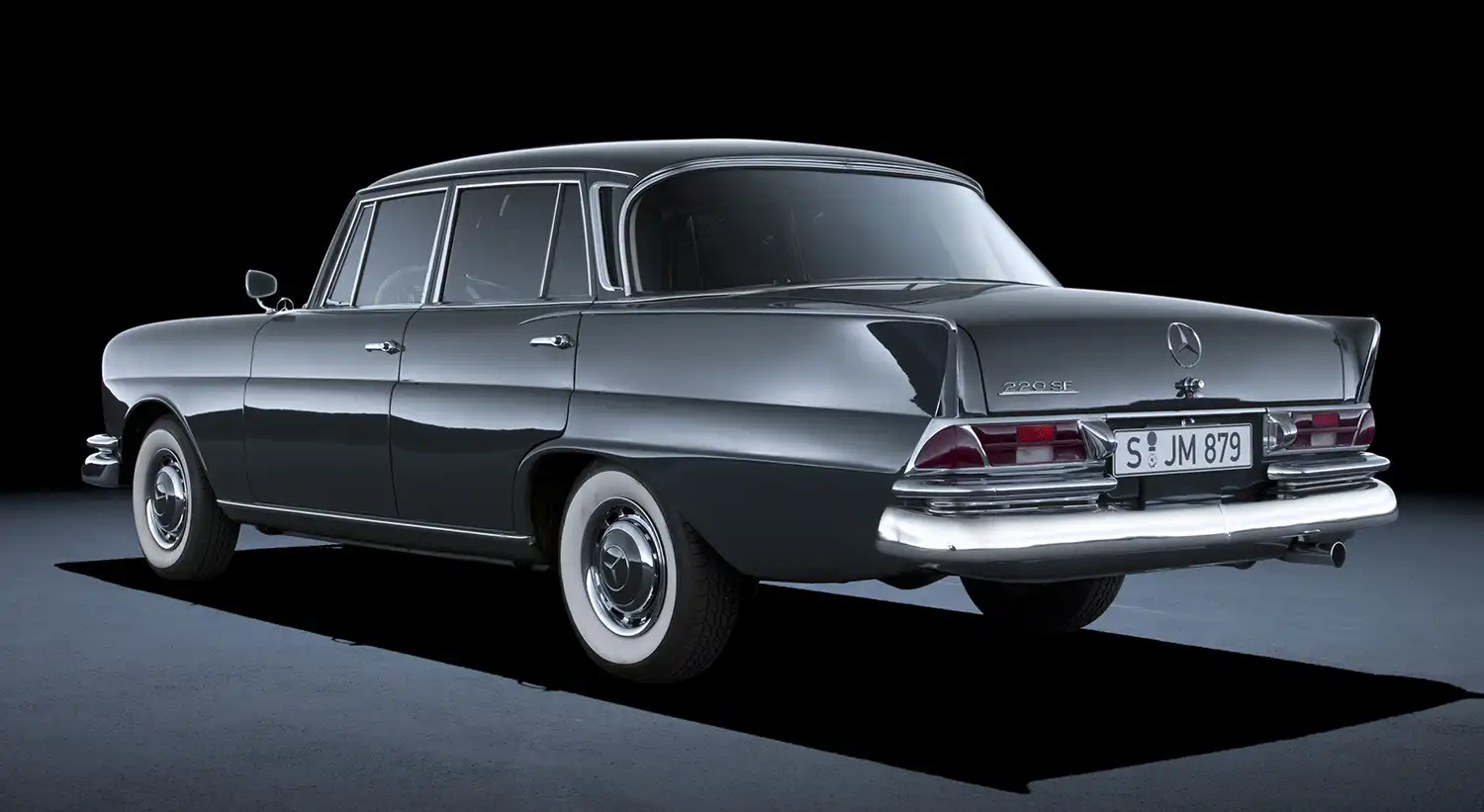
Elegant Styling with a Purposeful Flair: The design of the Mercedes-Benz 220 SE was a harmonious blend of elegance and subtle sportiness. The overall silhouette was clean and sophisticated, characterized by a low waistline, large windows providing excellent visibility, and a well-proportioned body. The signature tailfins, while a defining feature, were relatively restrained compared to their American counterparts, integrated smoothly into the rear fenders. The chrome accents, including the prominent front grille with the Mercedes star, the window surrounds, and the bumpers, added a touch of understated luxury. The 220 SE also featured a more upscale trim compared to the other W 111 models, further emphasizing its premium positioning. The overall design conveyed a sense of solidity, refinement, and timeless appeal, characteristics that continue to be associated with the Mercedes-Benz brand.
Pioneering Safety Features for the Modern Era: Beyond its styling and performance, the Mercedes-Benz W 111 series, including the 220 SE, was groundbreaking for its emphasis on safety. It was one of the first cars to feature a body structure with designated crumple zones, designed to absorb impact energy in the event of a collision and protect the passenger cell. This innovative approach to structural safety was a significant advancement for the automotive industry and highlighted Mercedes-Benz’s commitment to occupant protection. The W 111 also incorporated other safety features that were advanced for their time, such as a padded dashboard and optimized visibility. These safety innovations cemented the W 111’s reputation as not only a luxurious and well-engineered car but also a leader in automotive safety.
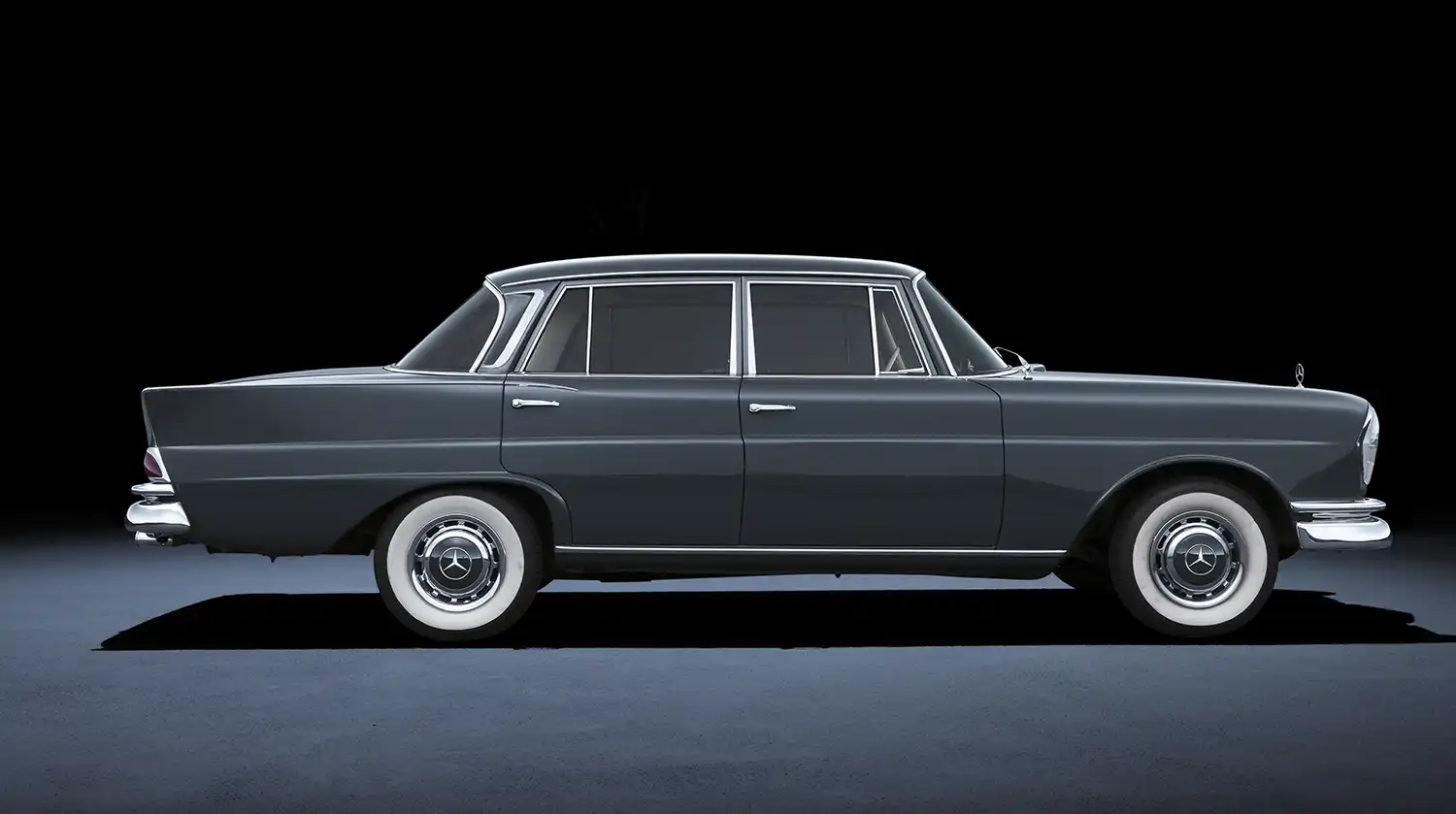
Refined Power and Smooth Performance: Engine and Performance: The Mercedes-Benz 220 SE was distinguished within the W 111 range by its fuel-injected 2.2-liter inline six-cylinder engine. This advanced fuel injection system, unlike the carbureted engines in the 220 b and 220 Sb, provided more precise fuel delivery, resulting in improved performance, smoother operation, and enhanced fuel efficiency. The engine produced approximately 120 to 134 horsepower (depending on the specific version and market), which was sufficient to propel the 220 SE to a respectable top speed for its era and provide comfortable cruising ability. The fuel injection system also contributed to more reliable starting and better performance in various weather conditions. The 220 SE was typically equipped with a four-speed manual transmission, although an optional automatic transmission was also available, catering to different driver preferences. The combination of the refined fuel-injected engine and the well-engineered chassis provided a smooth and comfortable driving experience, befitting its status as a premium sedan.
Comfort and Sophisticated Engineering: The Mercedes-Benz 220 SE was designed with a focus on passenger comfort and a refined driving experience. The suspension system, typically featuring independent front suspension and a swing axle rear suspension, was engineered to provide a comfortable ride while maintaining good handling characteristics. The interior was spacious and well-appointed, featuring high-quality materials such as leather and wood trim, creating a luxurious and inviting atmosphere. The seats were designed for comfort on long journeys, and the overall build quality was exceptional, reflecting Mercedes-Benz’s reputation for meticulous engineering and attention to detail. Features such as power steering and air conditioning were available as options, further enhancing the comfort and convenience for occupants.
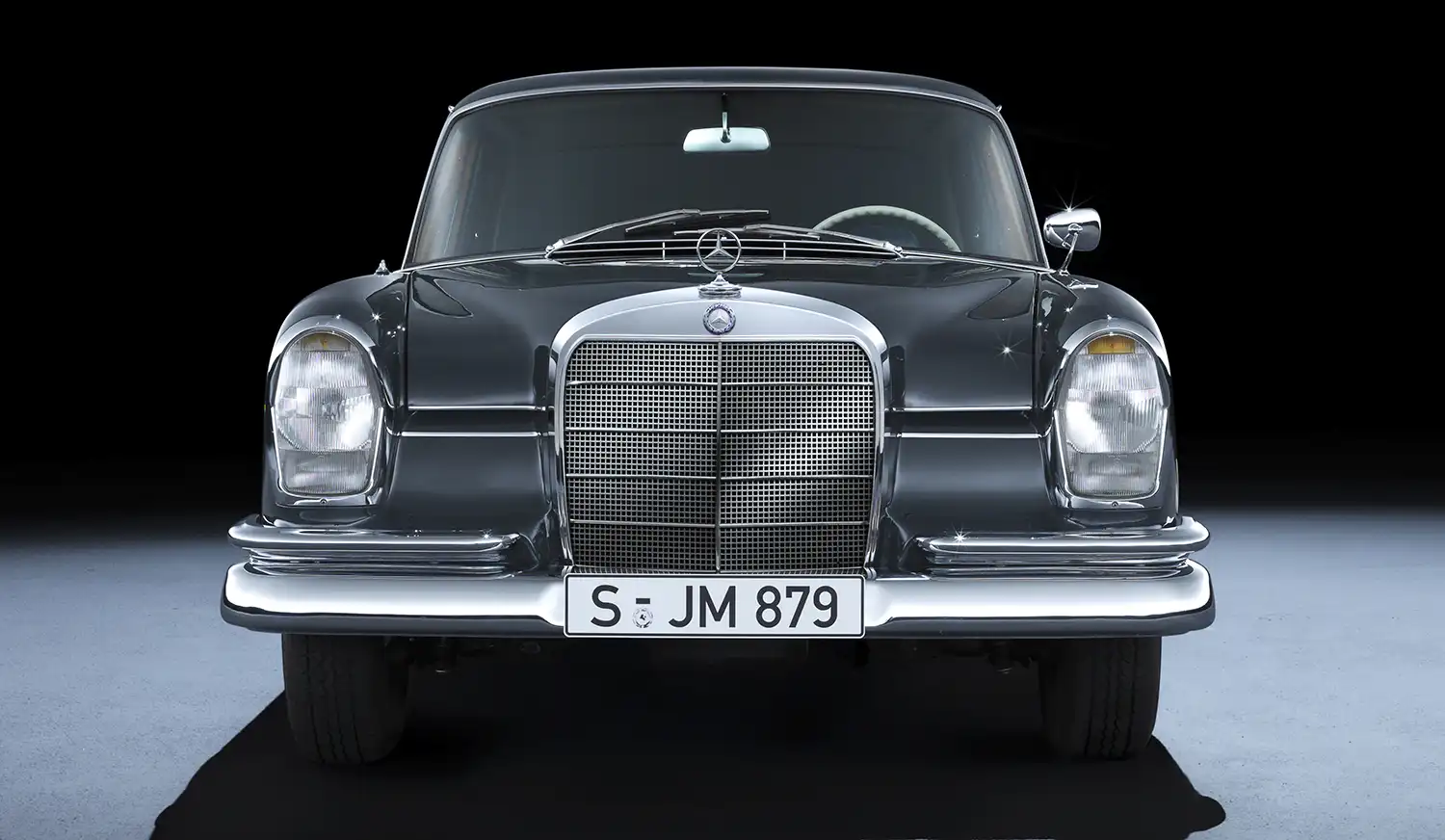
A Symbol of Status and Enduring Quality: The Mercedes-Benz 220 SE “Tailfin” quickly became a symbol of status and discerning taste. Its elegant design, advanced engineering, and reputation for reliability and safety made it a popular choice among professionals, business leaders, and anyone seeking a high-quality and sophisticated automobile. The “Tailfin” Mercedes represented a blend of traditional craftsmanship and modern innovation, appealing to a broad range of buyers who appreciated its understated luxury and enduring quality. Even today, the W 111 series, and particularly the 220 SE, is highly regarded by classic car enthusiasts and collectors for its timeless design, robust engineering, and historical significance.
Legacy and Collectibility: The Mercedes-Benz 220 SE “Tailfin” holds a significant place in automotive history as a vehicle that successfully blended elegant styling with engineering innovation and a strong emphasis on safety. Its distinctive design, while initially a nod to American trends, evolved into a unique and recognizable Mercedes-Benz signature. The pioneering safety features introduced in the W 111 series had a lasting impact on automotive design and continue to influence safety standards today. The 220 SE, with its refined fuel-injected engine and luxurious appointments, remains a highly desirable classic car, appreciated for its smooth driving experience, its timeless elegance, and its representation of a pivotal era in Mercedes-Benz history. Well-maintained or meticulously restored examples are highly sought after by collectors who recognize the enduring quality and historical significance of this iconic “Tailfin” Mercedes.
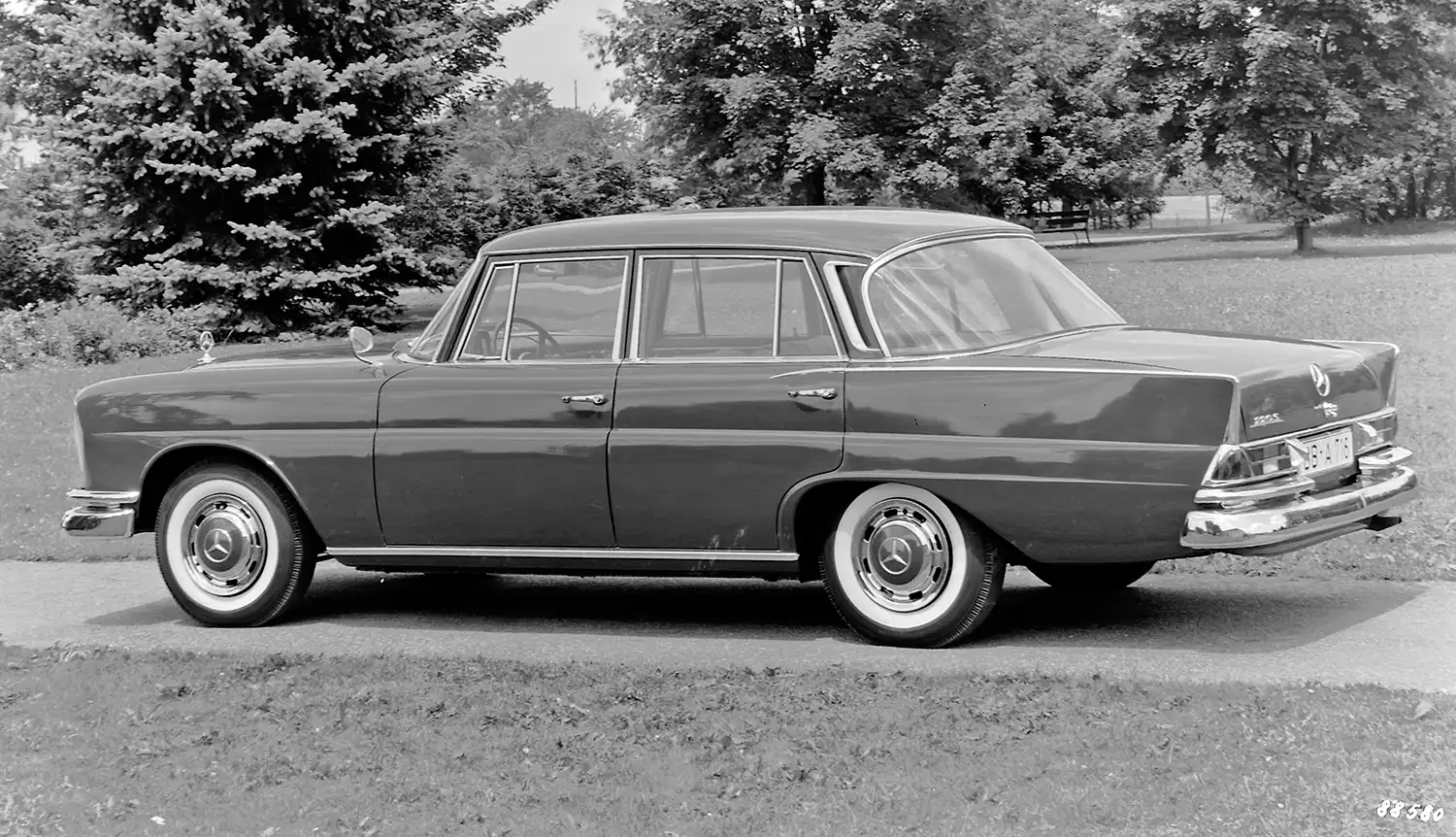
Summary:
- Mercedes-Benz 220 SE part of the “Tailfin” (W 111) series (1959-1968).
- Featured distinctive tailfin styling with a practical purpose.
- Pioneering safety features including a body structure with crumple zones.
- Equipped with a refined fuel-injected 2.2-liter inline six-cylinder engine.
- Offered smooth performance and comfortable cruising.
- Interior featured high-quality materials and available luxury options.
- Became a symbol of status, elegance, and enduring quality.
- Remains a highly collectible classic car appreciated for its design and engineering.
Disclaimer: Specifications and performance figures are based on typical models of the era and may vary depending on the specific year and market. Safety features were advanced for their time but do not represent modern safety standards.
Photos Source : Mercedes-Benz
This article was crafted with assistance from Gemini
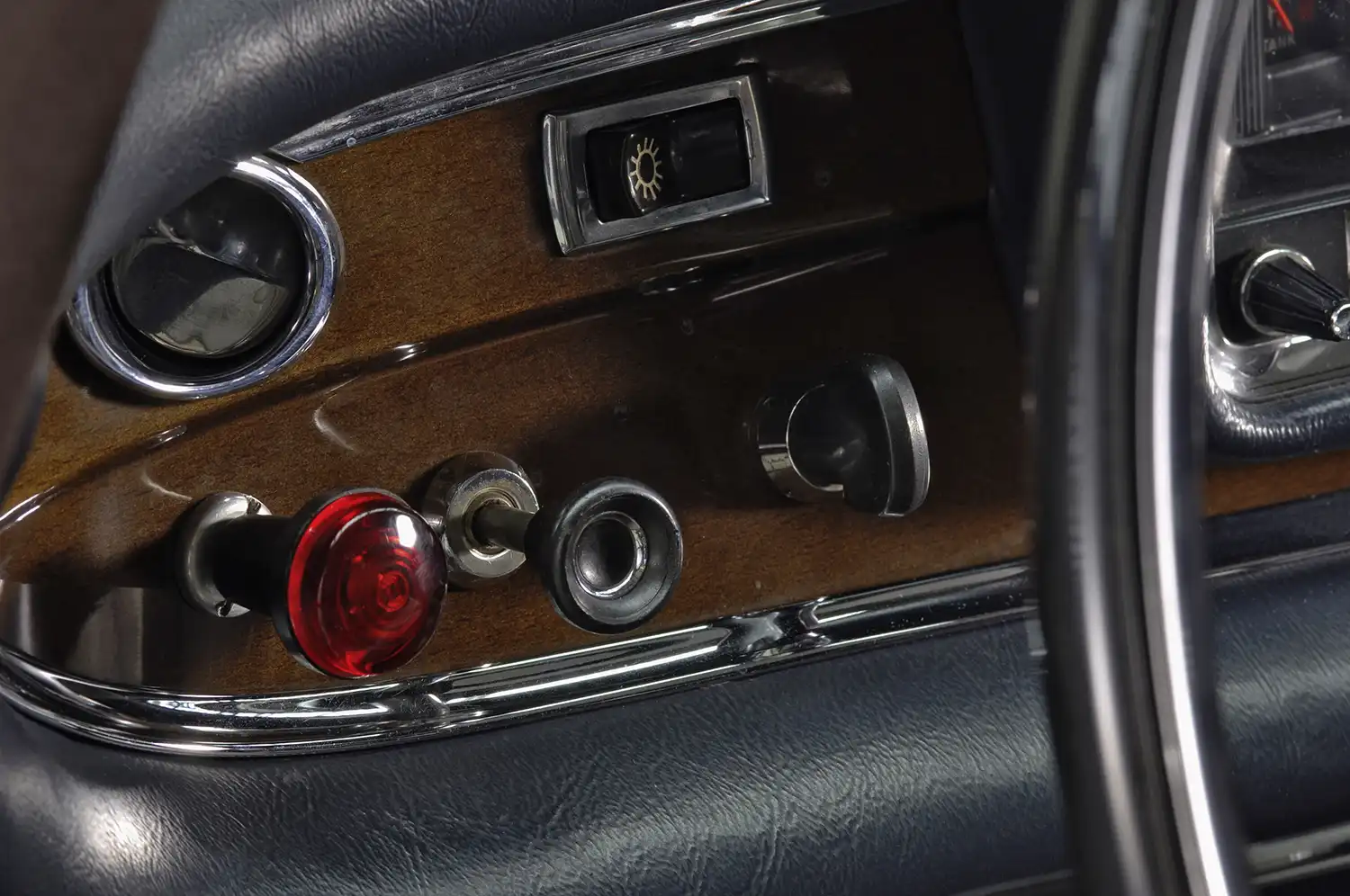
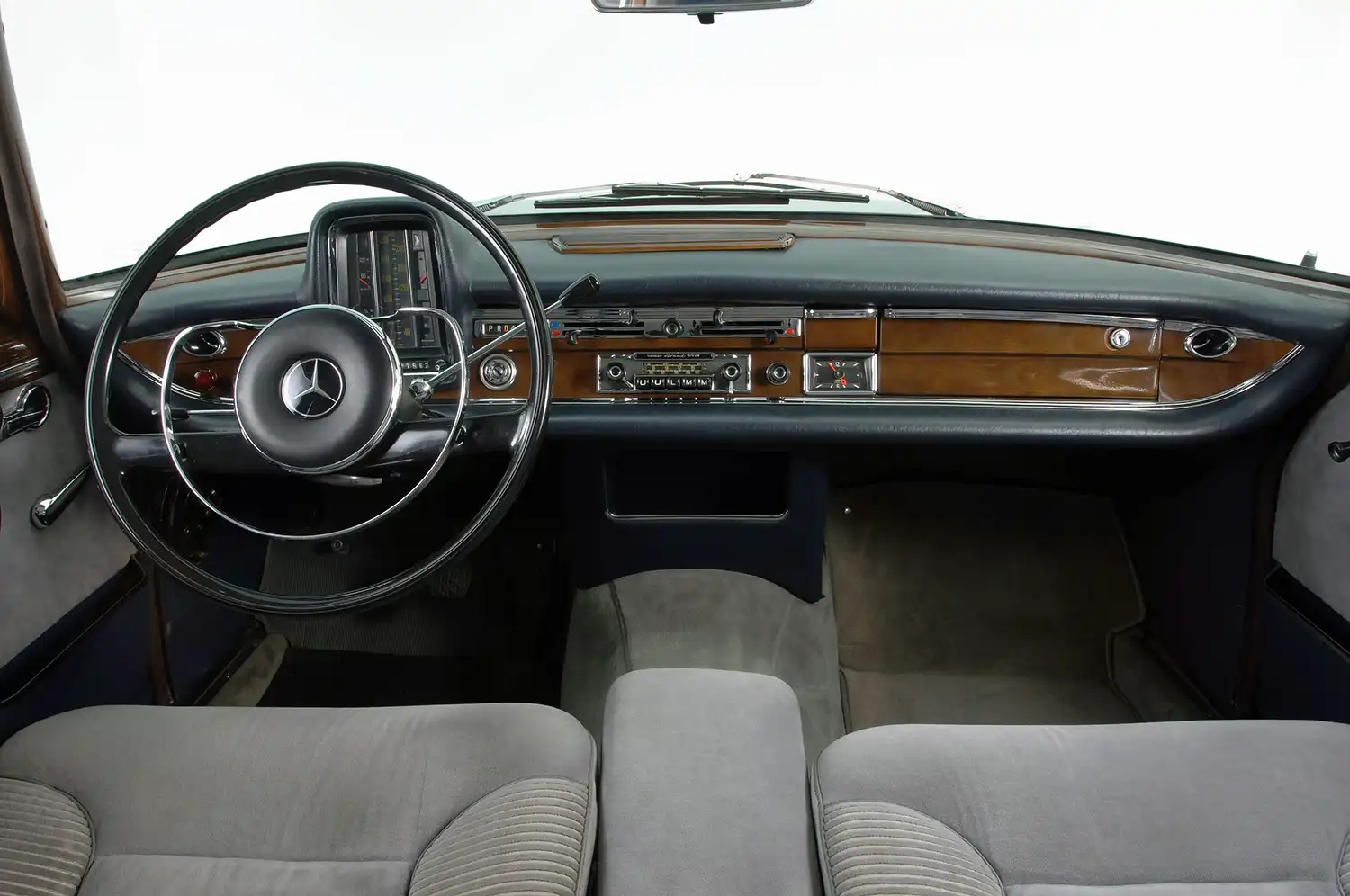
The post Mercedes-Benz 220 SE “Tailfin” (W 111): Elegance and Innovation Defined appeared first on EN.WHEELZ.ME.




